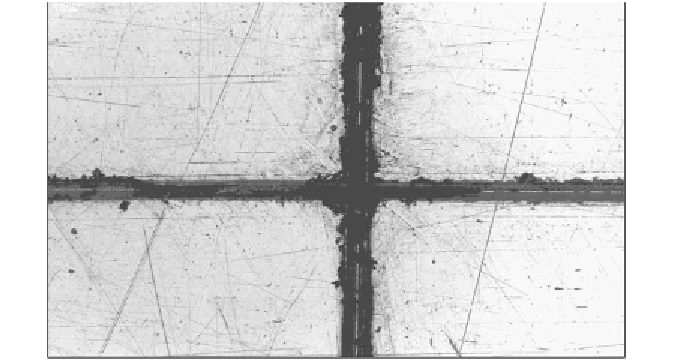Biomedical Engineering Reference
In-Depth Information
Reproduced with permission. Copyright retained by Inderscience Publishers.
Figure 52. Example of Sample with Scribed lines as Reference Point, 5X
Magnification.
3.5. Experimental Data Collection Reliability and Validation
Data collected from the experimentation is essential in this study. Data
must prove to be both reliable and valid. Initial validation with the
instrumentation to measure velocity was accomplished with the vacuum
cannon and it's relatively large projectile. Though the number of
measurements taken from this part of the study were not sufficient to
determine a level of precision, the measurement process proved reliable. Data
was recorded electronically with the Oros Data Acquisition (DAQ) hardware
and respective software, thereby eliminating potential human error in manually
recording or transferring of measurements. The sensors proved to work in
every test with the vacuum cannon once resistors were added to the BNC
connections to attain matching electrical impedance. The limitation with this
method proved to be in the DAQ hardware. With a sample rate of 51.2 MHz,
the resolution provided by the system could result in errors up to 11%. To
avoid errors of this type in future tests, much higher sampling rates would be
required. However, the satisfactory results of the sensors provided the
confidence necessary to continue with the same instrumentation hardware in
the ensuing tests in the study, with only the DAQ sampling rate requiring
improvement.

